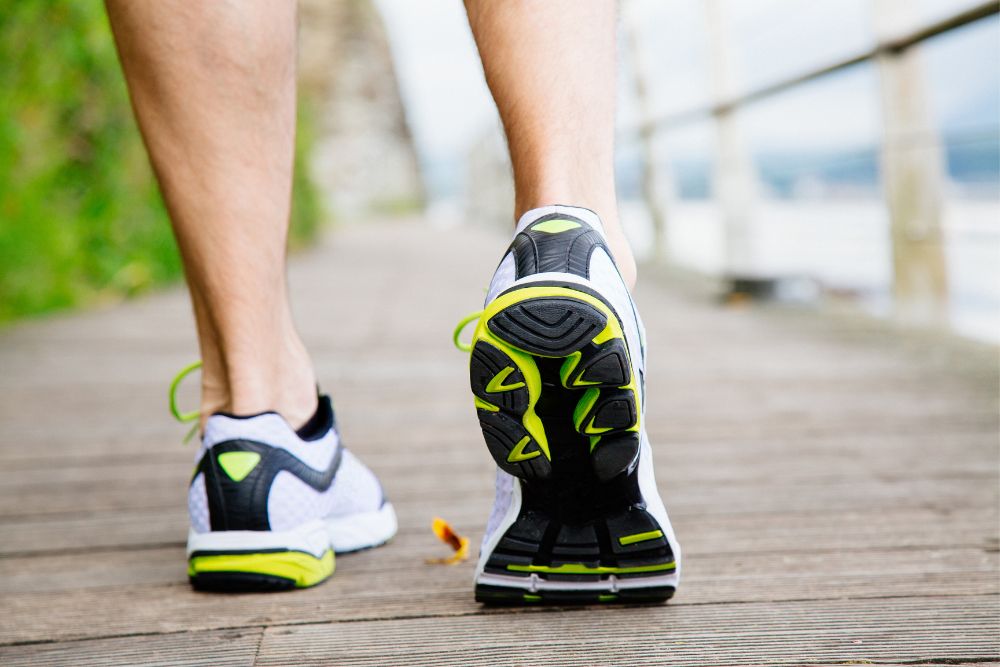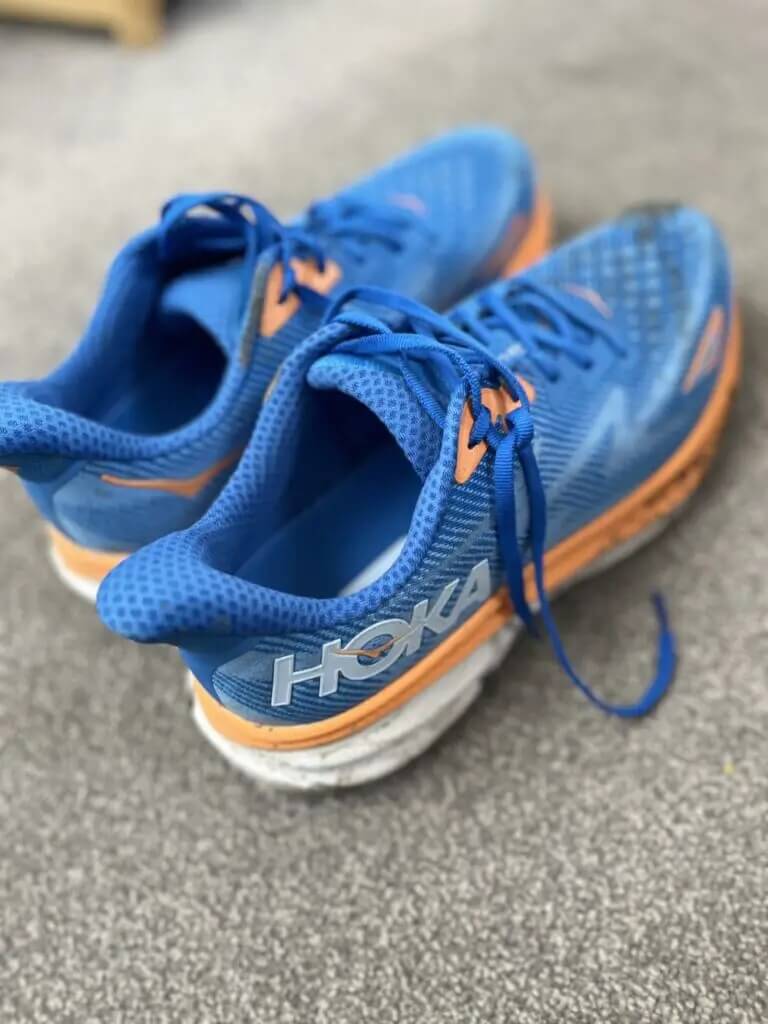Discover what are stability running shoes and what brands are popular with runners in our guide.
Stability running shoes are a popular type of footwear designed to provide additional support and help keep the foot in alignment while running. They are particularly useful for runners who overpronate or have flat feet, as these conditions can cause the ankle to roll too far inward when running, leading to pain and injury. Stability shoes are built with extra support in the midsole or arch area to help correct this problem and keep the foot in a neutral position.
Stability running shoes generally tend to be heavier than other types of running shoes, but they make up for this with their added support and cushioning. They are ideal for runners who need more stability and support, especially during recovery runs when the body is fatigued from a previous workout. Some stability shoes may also be nimble enough to use for faster days, but they may not be suitable for the bulk of a runner’s mileage.
If you are considering purchasing stability running shoes, choose a pair appropriate for your foot type and running style. With so many options available on the market, it can be overwhelming to know where to start.
In this article, we will provide an overview of what stability running shoes are, how they work, and what factors to consider when it’s time to buy a running shoe. We will also review some of the best stability running shoes available, based on expert reviews and customer feedback.
Contents
What are Stability Running Shoes?

Stability running shoes provide support and control for runners who overpronate, which is when the foot rolls inward excessively during the gait cycle. These shoes are also suitable for runners with flat feet, who need extra arch support to maintain proper alignment.
Stability running shoes typically feature a medial post, which is a wedge of firmer foam on the inner side of the midsole. This post helps to limit the inward rolling of the foot and provides extra support for the arch. Some stability shoes also have a heel counter, which is a firm piece of material that wraps around the heel to provide additional stability.
Stability shoes are often recommended for runners who experience pain or discomfort in their feet, ankles, or knees due to overpronation. Not all runners need stability shoes. In fact, some runners may benefit more from neutral shoes, which have less support and allow for more natural foot movement.
They are often heavier and more structured than normal running shoes. Sometimes runners opt for stability shoes for recovery days or for trail running, e.g., mud running shoes.
When shopping for stable running shoes, consider factors such as fit, cushioning, and durability. It’s also a good idea to try on several different brands and models to find the shoe that feels most comfortable and supportive for your feet.
Here are some key features to look for in a stable running shoe:
- Medial post for support and control
- Heel counter for stability
- Arch support for flat feet
- Good fit for your foot shape
- Appropriate level of cushioning for your running style
- Durable materials for long-lasting wear
Who Should Wear Stability Running Shoes?
If you are an overpronator or have mild to moderate pronation, stable running shoes may be a good option for you. Pronation is the natural inward rolling of the foot during the gait cycle, but excessive pronation can lead to injuries. Stability shoes are designed to help correct overpronation by providing support to the arch of the foot and preventing the ankle from rolling inward.
Flat-footed runners may also benefit from stability shoes as they provide additional support for the arch. However, runners with high arches may not need stability shoes as they typically have a more rigid foot structure and may benefit from neutral shoes instead.
Stability shoes are also recommended for runners who are recovering from injuries or have a history of lower extremity injuries. The added support and cushioning can help reduce the risk of re-injury and provide a more comfortable running experience.
Not all runners may need stability shoes. It is best to consult with a healthcare professional or a running specialist to determine the appropriate type of shoe for your individual needs. You might also be interested in learning about running pyramids.
Features of Stability Running Shoes
Stability running shoes are designed to provide support and correct overpronation, which is when the foot rolls inward excessively during the running gait cycle. Here are some of the key features of stability running shoes:
Dual-density foam: Most stability running shoes feature a dual-density foam midsole, with firmer foam on the medial (inner) side of the shoe and softer foam on the lateral (outer) side. This helps to correct overpronation by guiding the foot into a more neutral position.
Medial post: Some stability shoes also feature a medial post, which is a firmer section of foam that runs from the heel to the midfoot on the medial side of the shoe. This provides extra support to prevent the foot from rolling inward too much.
Heel counter: The heel counter is a stiff piece of material that wraps around the back of the shoe and provides support and stability to the heel. This helps to prevent the foot from slipping around inside the shoe, which can lead to blisters and other injuries.
Wide base: Stability shoes often have a wider base than neutral shoes, which provides a more stable platform for the foot. This can be especially helpful for runners with flat feet or other foot conditions that require extra support.
How to Choose the Right Stability Running Shoes
Choosing the right stability running shoes can be a daunting task, but it is crucial to ensure that you get the right fit and support for your feet. Here are a few tips to help you choose the right pair:

Know Your Foot Type: Understanding your foot type is crucial in choosing the right stability running shoes. Overpronators need shoes that offer more support and stability, while neutral runners can opt for shoes that offer less support.
Get proper measurements: It is essential to get your feet measured by a professional to ensure that you get the right size and width. A good fit is crucial in preventing injuries and ensuring comfort.
Consider your running surface: The type of surface you run on can also affect the type of stability running shoes you need. Trail runners, for example, need shoes that offer more traction and support for uneven terrain.
Look for quality materials: Quality materials such as breathable mesh, durable rubber, and cushioned midsoles can make a significant difference in the comfort and durability of your shoes.
Try them on: Try on different pairs of stability running shoes to find the right fit and support. Take them for a test run to ensure that they feel comfortable and provide the right level of support.
Choosing the right stability running shoes is crucial in preventing injuries and ensuring comfort during your runs. Make an informed decision based on your foot type, running surface, and personal preferences.
Benefits of Wearing Stability Running Shoes
Stability running shoes are designed to provide arch support and help runners who overpronate. Here are some benefits of wearing stability running shoes:
Reduced risk of injury: Stability running shoes help correct overpronation, which can lead to injuries such as shin splints, plantar fasciitis, and IT band syndrome.
Better alignment: Stability shoes help align your foot and ankle, which can improve your overall gait and reduce the risk of knee and hip pain.
Improved comfort: Stability shoes provide extra cushioning and support, which can make your runs more comfortable.
Increased stability: As the name suggests, stability shoes provide more stability than neutral shoes, which can help prevent ankle sprains and other injuries.
Stability shoes are not a cure-all for running injuries. If you’re experiencing pain or discomfort while running, it’s important to see a doctor or physical therapist to determine the root cause of the problem
Best Stability Shoes
Asics Gel-Kayano – A classic stability shoe with a gel cushioning system and medial support for overpronation.
Brooks Adrenaline GTS – A popular shoe with a supportive midsole and seamless upper for a comfortable and stable ride.
Saucony Guide – A lightweight Saucony shoe with a structured midsole and flexible upper for stability and comfort.
New Balance 860 – A reliable shoe with a medial post for stability and a cushioned midsole for comfort.
Nike Air Zoom Structure – A responsive shoe with a supportive midsole and Flywire cables for a secure fit.
Hoka One One Arahi – A lightweight and cushioned shoe with a supportive midsole that helps to prevent overpronation.
Hoka Clifton – The Clifton is a neutral running shoe, but it represents a nice compromise between a lightweight trainer and a more heavyweight stability shoe like the Arahi. It still provides your foot structure.
Mizuno Wave Inspire – A durable and stable shoe with a wave-shaped midsole that offers both cushioning and support for a comfortable ride.
The Final Word on Stability Running Shoes

Stability running shoes can help improve running economy and reduce the risk of injuries. When shopping for stable running shoes, consider factors such as arch height, foot strike pattern, and the level of cushioning you prefer. Try on different brands and models to find the one that feels most comfortable and supportive.
Stability running shoes are just one piece of the puzzle for injury prevention and performance improvement. Maintain good running form, gradually increase mileage and intensity, and incorporate strength and flexibility training into your routine.
Overall, stable running shoes can be a valuable tool for runners looking to improve their performance and reduce the risk of injuries. By choosing the right shoe and incorporating it into a comprehensive training plan, you can enjoy a safer, more efficient, and more enjoyable running experience. If you like this article, check out our guide to the best shoes for crossfit and running.



